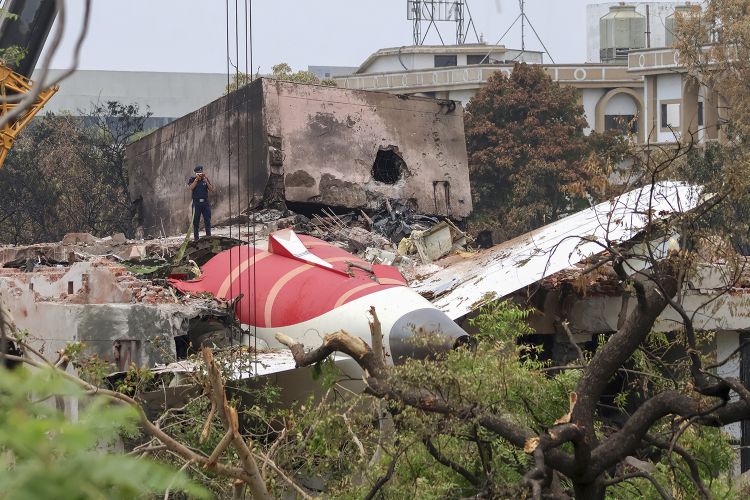A fatal aviation accident involving Air India’s Boeing 787-8 Dreamliner occurred on June 12, 2025, just moments after takeoff from Ahmedabad. Flight AI171, bound for London Gatwick, failed to climb properly, crashed into a nearby building, and erupted in flames. Out of 242 people onboard, only one survived. More than 30 people on the ground were also killed, making it one of the worst aviation disasters in India’s history—and the first fatal crash of the Dreamliner type.

Timeline of the Incident
- Departure: The aircraft lifted off around midday in hot weather conditions.
- Failure to Climb: Within 30 seconds, it reached only about 600–700 feet before beginning to descend.
- Crash Site: The plane hit a medical hostel near the airport perimeter, causing a fire and widespread devastation.
- Casualties: 241 onboard perished, along with dozens on the ground. Only one passenger survived.
Eyewitnesses and surveillance footage revealed the aircraft stayed in a nose-up position but never gained enough speed to sustain flight.
Investigation Focus: TOGA Mode, Thrust, and Configuration
Investigators are focusing on multiple technical and human factors that may have caused the crash:
- Insufficient Thrust: It appears the engines may not have delivered full power. Experts suspect TOGA (Take-Off/Go-Around) mode was not properly activated, leading to inadequate acceleration.
- Flap Configuration: Analysts are reviewing whether the wing flaps were extended correctly to generate lift.
- Landing Gear: The gear was never retracted, which would have increased aerodynamic drag during the critical phase of takeoff.
- High Takeoff Weight and Heat: The aircraft was near its maximum takeoff weight and operating in high ambient temperatures, which can affect lift.
The flight data recorder has been recovered and will help determine whether the problem was mechanical, procedural, or a combination of both.
Heroic Crew Response
Despite the unfolding emergency, the pilots issued a Mayday and may have attempted to steer the plane away from more populated areas. Many experts believe the final moments of the flight helped prevent even greater loss of life.
Government and Airline Response
India’s aviation authority initiated emergency safety checks on all Boeing 787 aircraft in the country. By June 17, most of the fleet had been cleared for service following inspections. Authorities found no systemic defects in the aircraft model but noted the need for improved maintenance and coordination within Air India’s operations.
Air India has pledged full cooperation, enhanced safety compliance, and transparent updates. Compensation for families of the victims and the lone survivor has already begun, with additional settlements expected under international aviation laws.
Flight Disruptions and Passenger Rights
In the days following the crash, multiple Air India long-haul flights were delayed or canceled due to inspections. If you are a passenger affected by such a disruption, here’s what you need to know:
- For Cancellations: You are entitled to a full refund or a rebooked flight at no additional cost.
- For Long Delays: You should receive meals, accommodation (if necessary), and timely information.
- Compensation: In some cases, you may also be eligible for financial compensation unless the airline proves the delay was caused by extraordinary circumstances.
Keep your receipts, boarding passes, and all communications from the airline—these will support any claims for reimbursement or compensation.
Should You Be Concerned About Flying?
The Boeing 787 has flown millions of hours worldwide with a strong safety record. This incident, while tragic, is being treated with the highest level of scrutiny, and corrective measures are already underway. Aviation remains statistically one of the safest forms of travel. And when issues do occur, passengers have a right to be protected. Read more about passenger rights in case of extraordinary circumstances and what airlines must still provide.
Passengers can take reassurance that no Dreamliner will fly without passing safety checks. Regulatory authorities in India and abroad continue to monitor the situation and will act swiftly if any further risk is identified.
Final Word
The Air India crash is a stark reminder of the importance of stringent safety protocols, proper crew procedures, and swift regulatory oversight. While the investigation is ongoing, both passengers and industry leaders await answers that may shape the future of flight safety.
For now, if your travel plans are affected, know your air passenger rights—and don’t hesitate to seek professional support for refunds or compensation. FlightRefunder is here to help passengers navigate these challenging situations with clarity and confidence.
